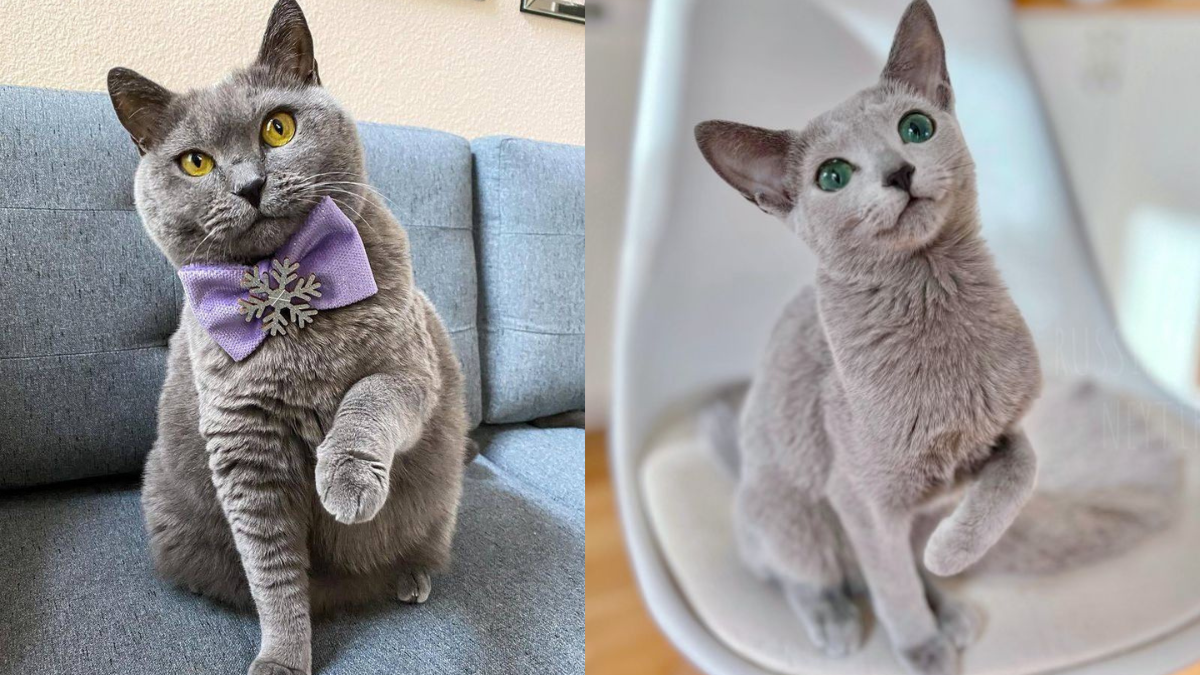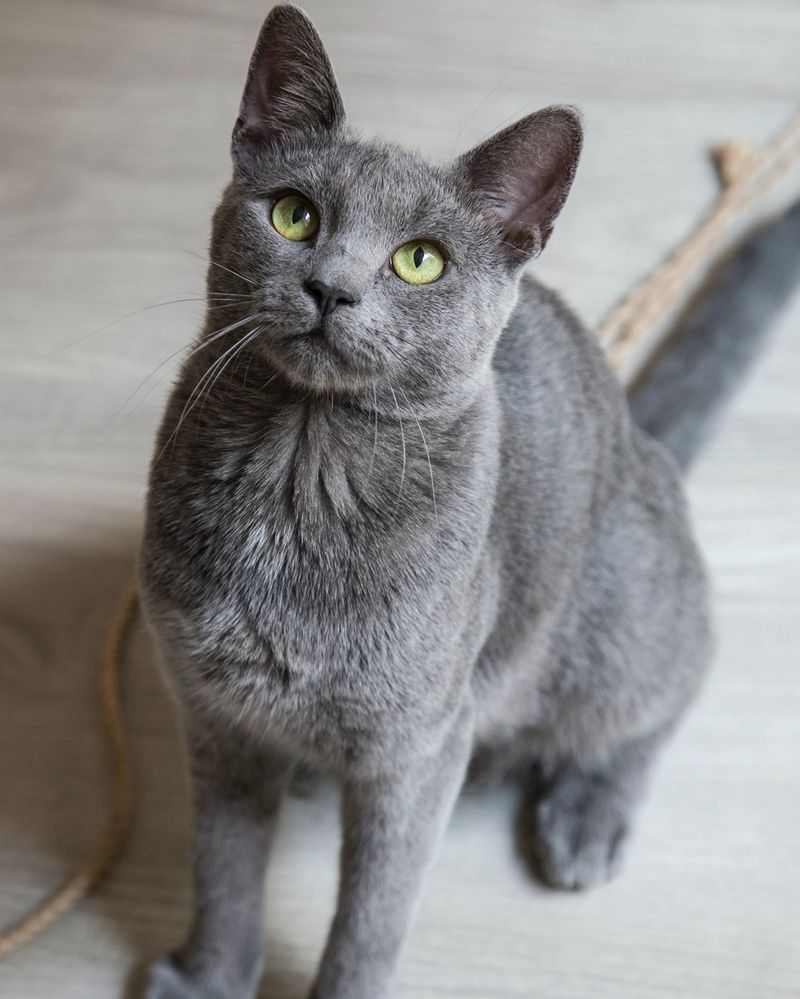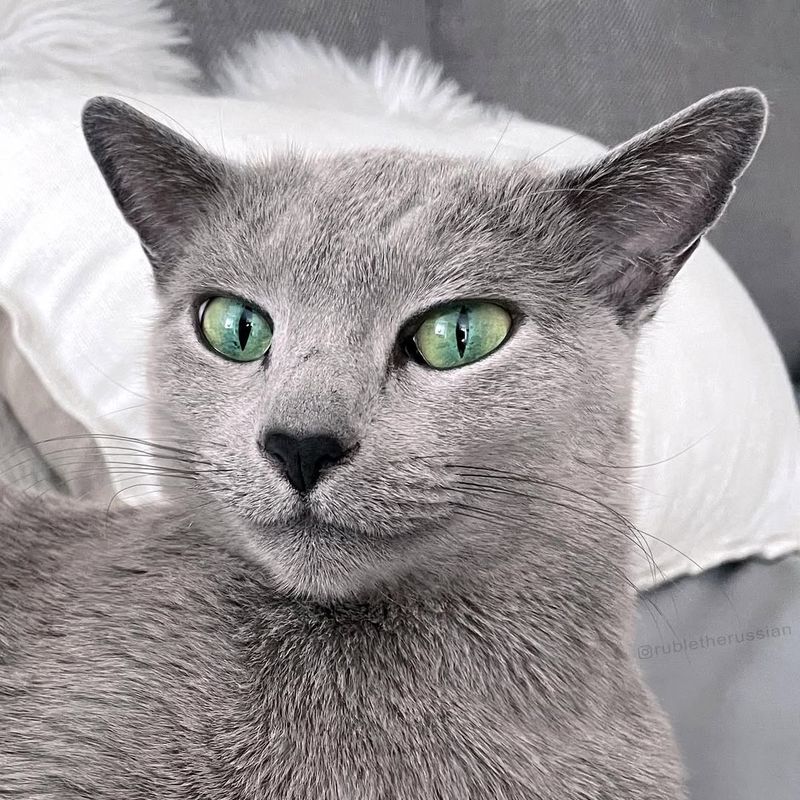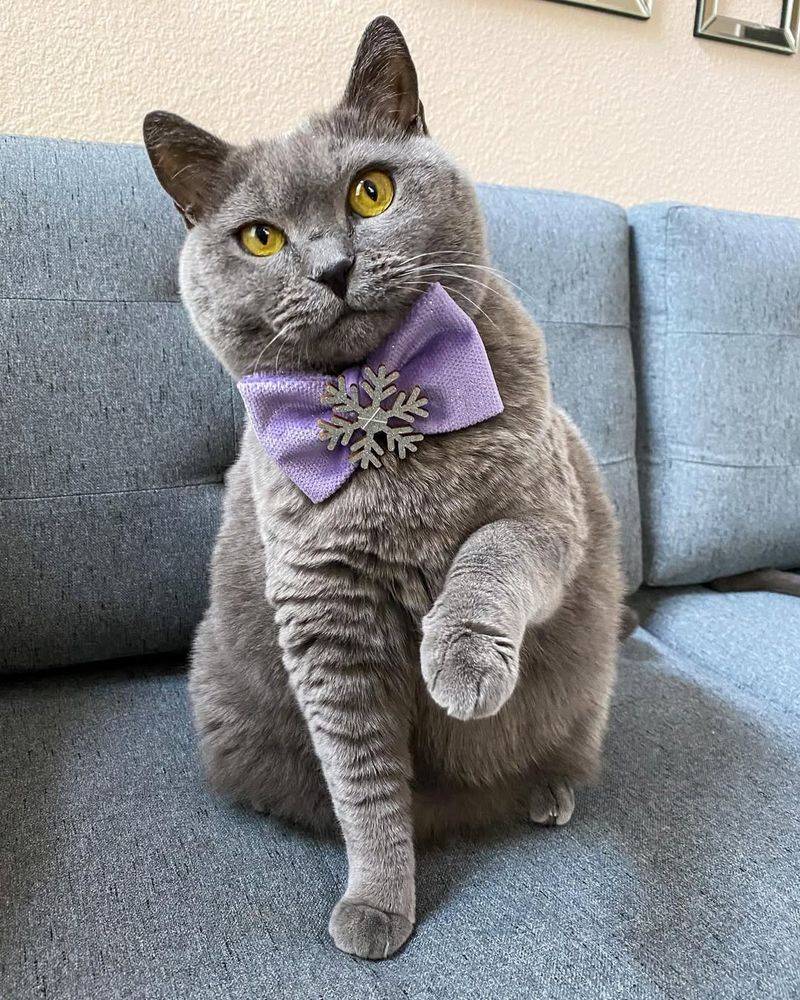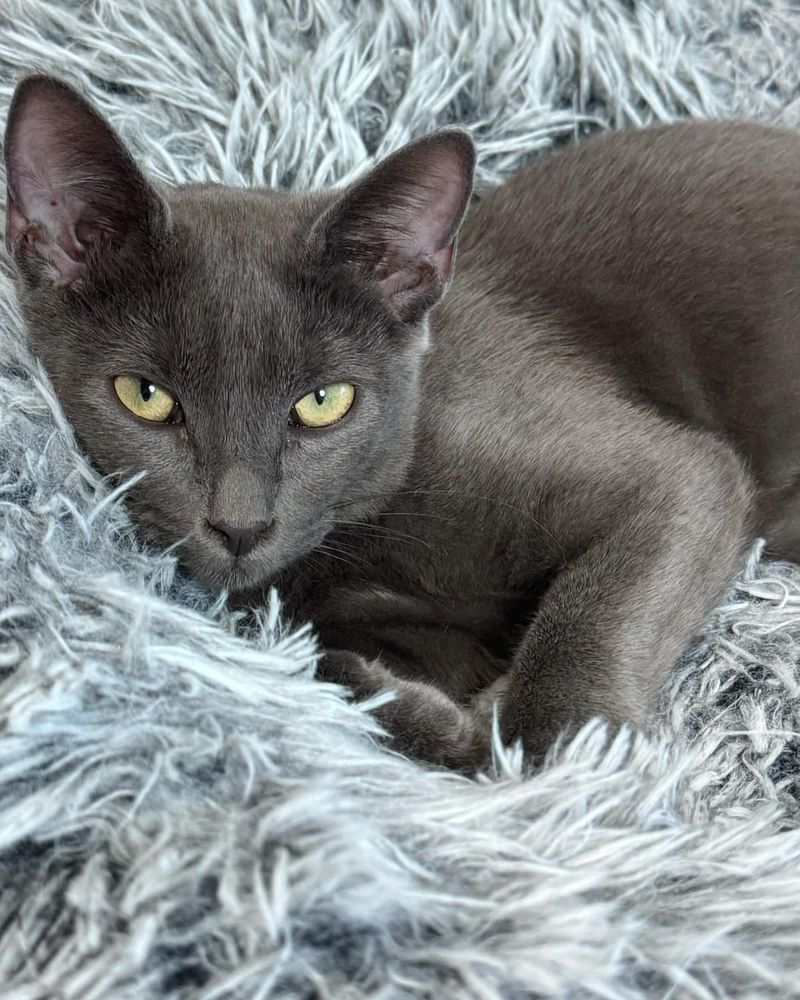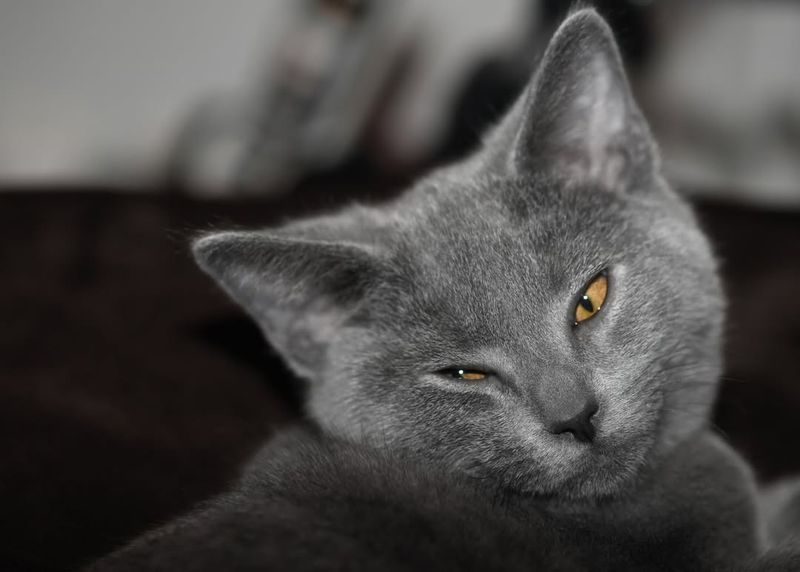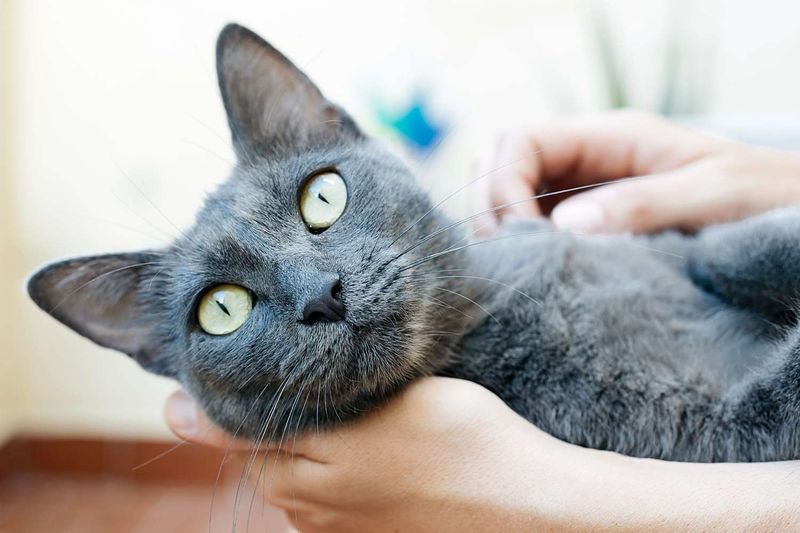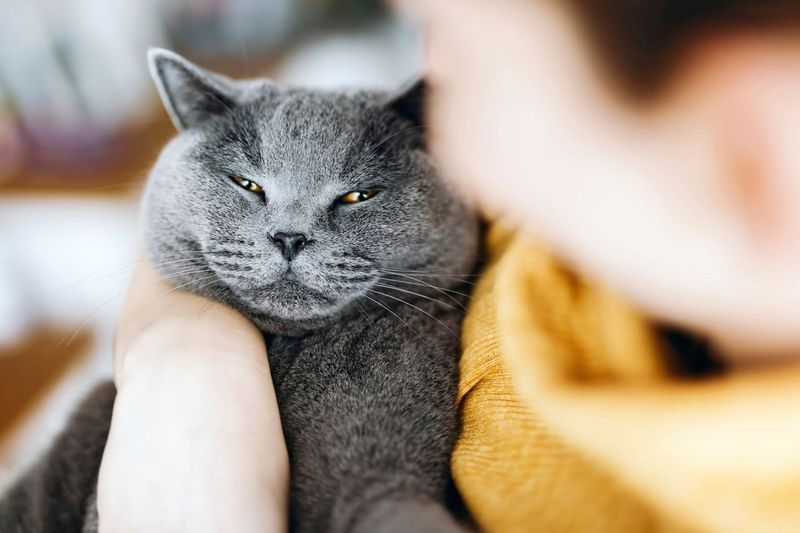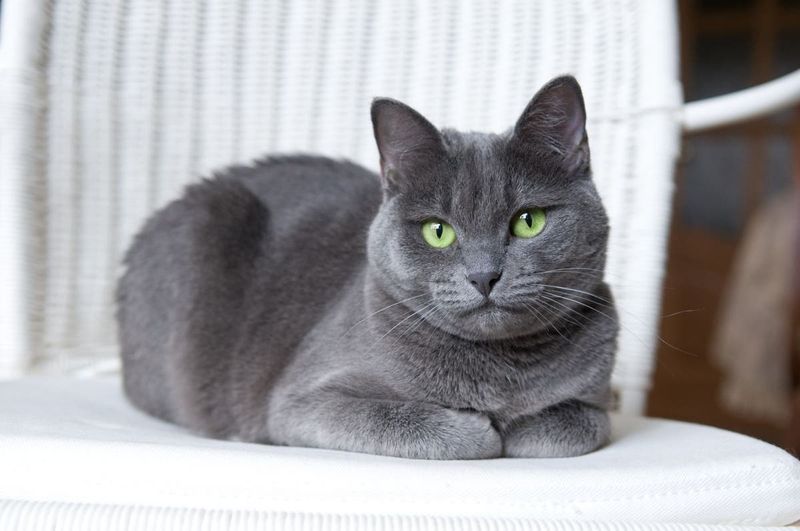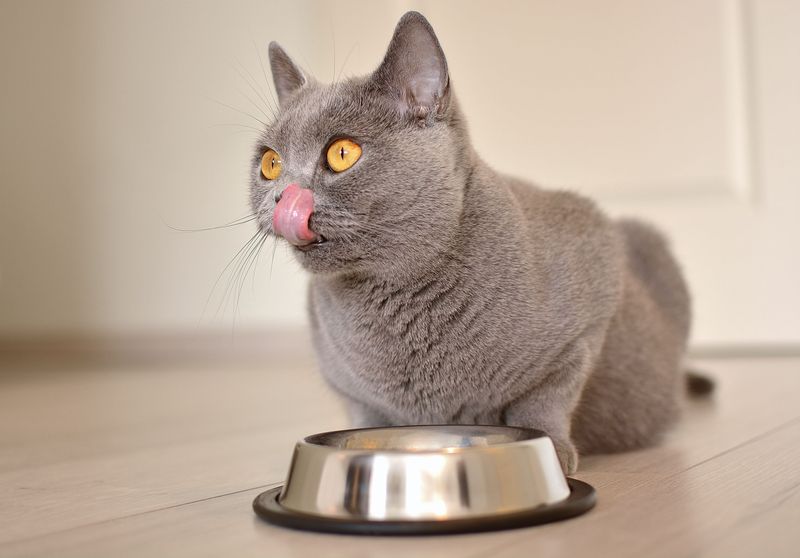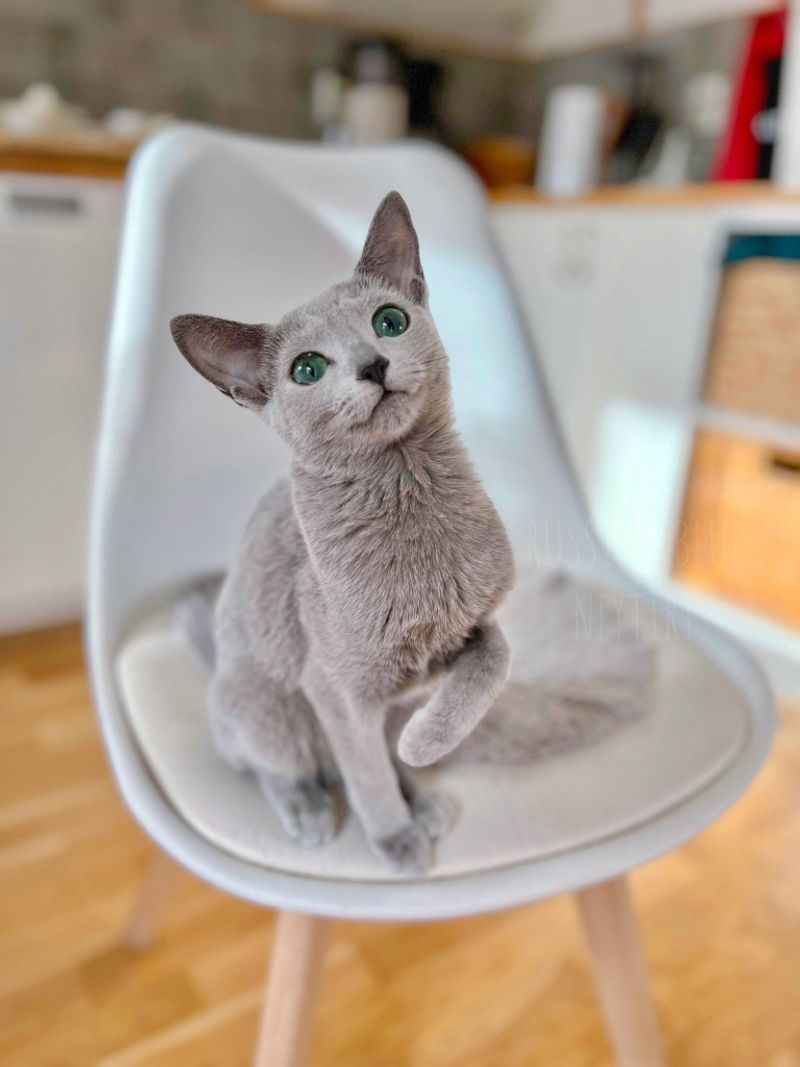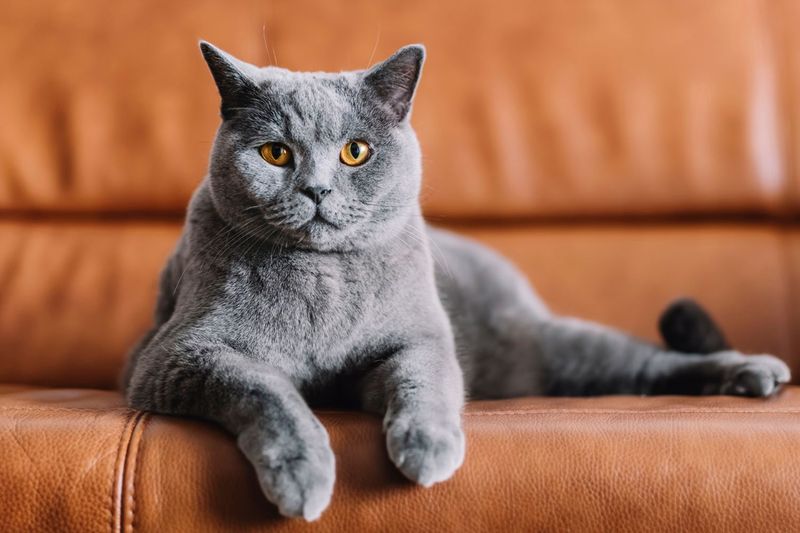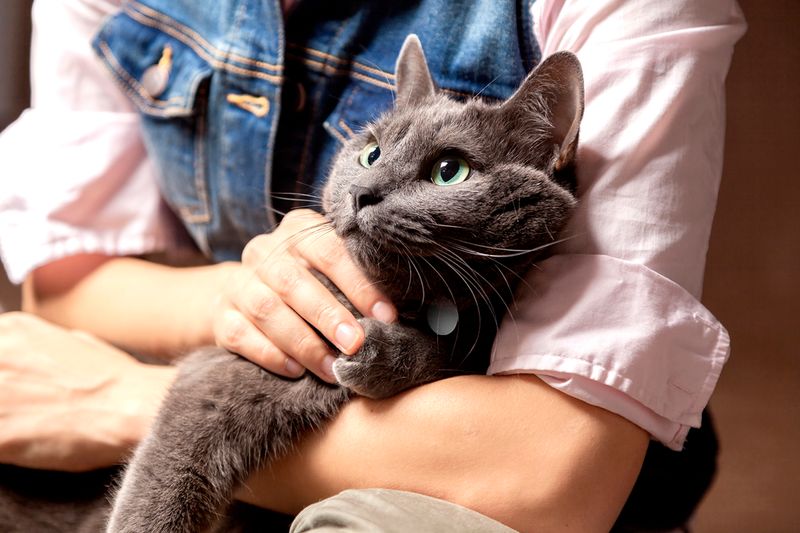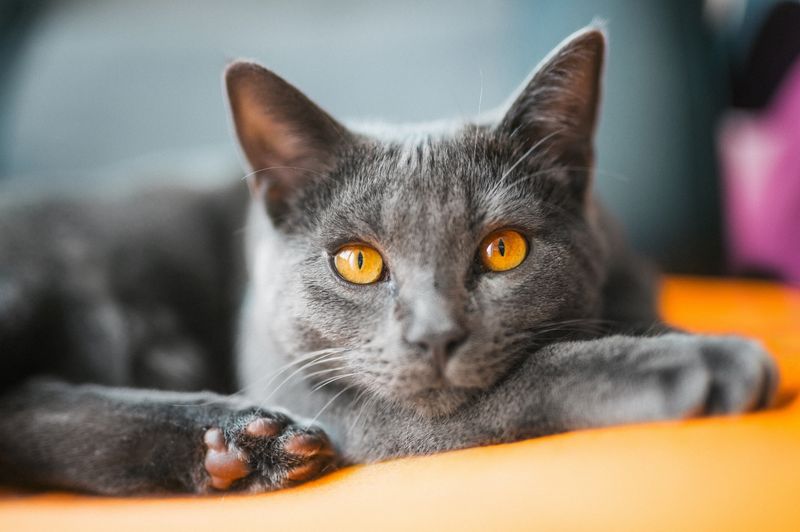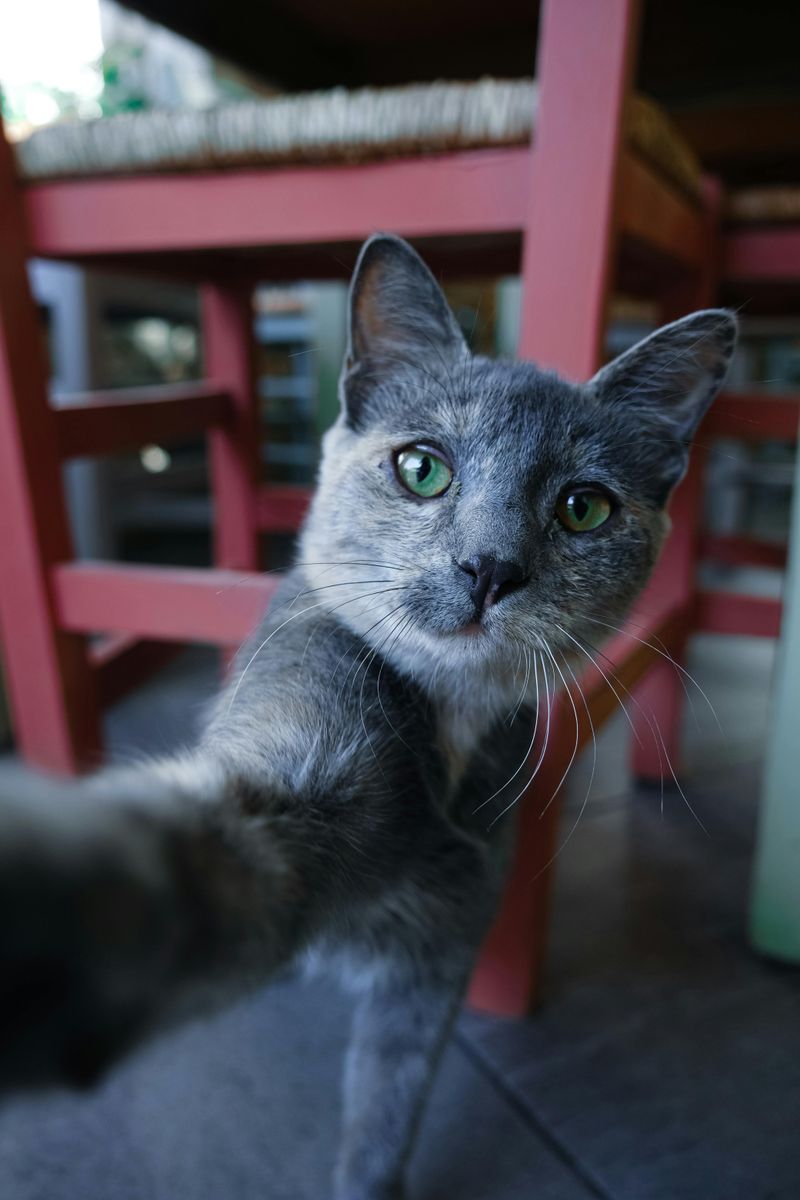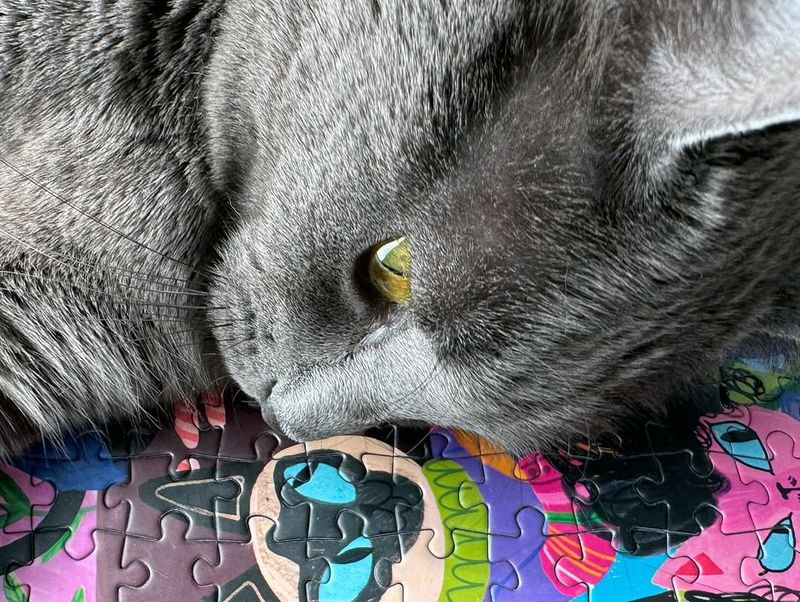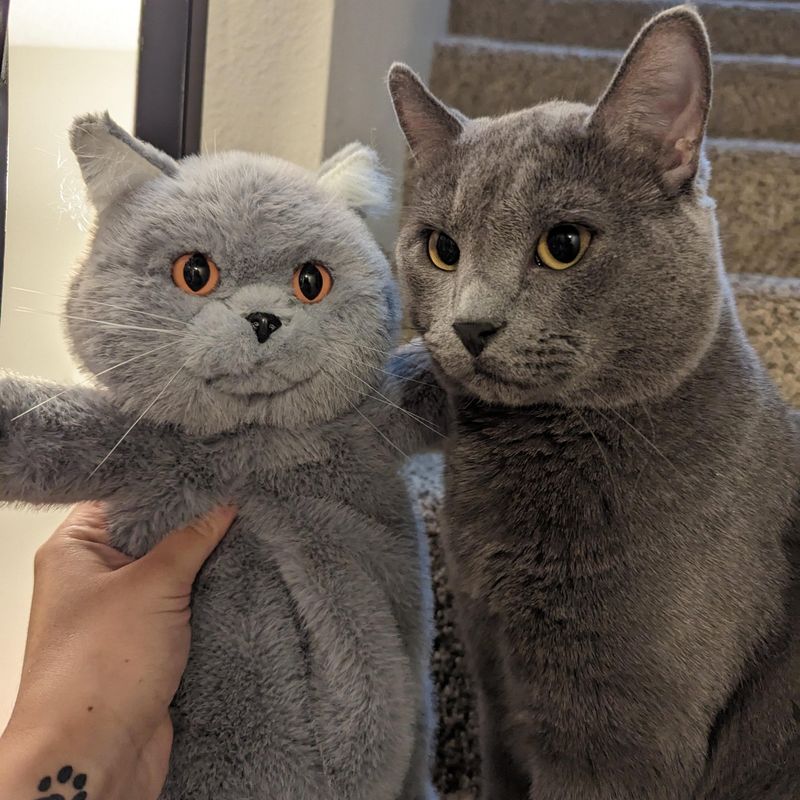📖 Table of Content:
- 1. Coat Color and Texture
- 2. Eye Color
- 3. Body Structure
- 4. Origin and History
- 5. Personality Traits
- 6. Grooming Needs
- 7. Vocalization
- 8. Adaptability
- 9. Dietary Preferences
- 10. Health Concerns
- 11. Lifespan
- 12. Social Interactions
- 13. Activity Level
- 14. Playfulness
- 15. Intelligence
- 16. Breeding and Availability
Choosing the right cat breed can be a tough decision, especially when faced with two stunningly similar options like the Russian Blue and Chartreux. While both are known for their calm nature and beautiful coats, their unique traits set them apart in meaningful ways. Knowing the key differences can help ensure the perfect match for your home and lifestyle.
Each breed has its own set of qualities that can influence your decision. Whether it’s their personality, grooming needs, or physical traits, these differences are worth considering. Getting familiar with what makes each breed stand out will make it easier to find the companion best suited to your needs.
For anyone torn between these two gorgeous breeds, understanding their subtle yet significant differences is essential. From their history to their temperaments, every detail plays a role in shaping their behavior and care requirements. Dive into the 16 surprising distinctions that will help guide the choice between a Russian Blue and a Chartreux.
1. Coat Color and Texture
The Russian Blue and the Chartreux are both admired for their stunning blue-gray coats. However, the Russian Blue’s coat is short, dense, and feels like plush velvet to the touch. This breed’s coat glistens with a silvery sheen under light.
On the other hand, the Chartreux has a dense, woolly coat that is slightly longer. Its fur is not only thick but also water-repellent, making it unique among felines. Both require regular grooming, but the texture and maintenance differ, reflecting their distinct origins and climate adaptations.
2. Eye Color
A key distinguishing feature of the Russian Blue is its vibrant green eyes. These stunning eyes contrast perfectly with their soft, bluish coat, creating an alluring and mesmerizing effect.
Conversely, Chartreux cats have striking copper or gold eyes that exude warmth and complement their serene expression. The change in eye color occurs as these cats mature, with kittens starting life with blue eyes that gradually shift as they grow. This transformation is one of the many enchanting aspects of these breeds, adding to their allure.
3. Body Structure
When it comes to body structure, Russian Blues stand out for their slim, graceful physique. Their long, fine-boned limbs and slender bodies create an elegant silhouette that contrasts with the more muscular and rounded build of the Chartreux.
In contrast, the Chartreux boasts a sturdy, muscular build. This breed is renowned for its powerful, robust frame that speaks to its working cat lineage. While both are agile and athletic, the Russian Blue’s physique gives an impression of refinement, whereas the Chartreux displays strength and solidity.
4. Origin and History
Delving into the origins, Russian Blues are believed to hail from the Archangel Isles in northern Russia. They have a storied history, once being the beloved pets of Russian czars.
On the other hand, Chartreux cats come from France and are said to be associated with Carthusian monks, known for their silence and mystery. Both breeds have fascinating tales that contribute to their mystique and appeal. Their distinct pasts reflect in their unique characteristics, making them cherished by cat lovers around the world.
5. Personality Traits
Personality-wise, Russian Blues are quite distinct. Though they can be a bit shy, they are affectionate and playful with their loved ones. These cats are known for their loyalty, often bonding deeply with their human families.
In contrast, Chartreux cats are calm, gentle, and famously even-tempered. They have a quiet presence and are known for their silent meow, often more of a chirp. Both breeds make wonderful pets, but their distinct personalities cater to different lifestyles and preferences, enriching the lives of their owners.
6. Grooming Needs
Maintaining a Russian Blue’s stunning coat requires regular attention. Despite their short fur, their thick, dense coat can easily gather loose hairs, so consistent brushing is essential to keep them silky and plush. This routine helps preserve their sleek, luxurious appearance.
Meanwhile, the Chartreux’s woolly, water-repellent coat demands more frequent grooming to prevent matting and manage shedding. Despite these differences, both breeds benefit from a grooming routine that promotes their overall health and keeps their coats in optimal condition. Their grooming requirements reflect their unique coat textures and environmental adaptations.
7. Vocalization
The way these cats vocalize reveals much about their personalities. Russian Blues are on the quieter side, often communicating with soft, delicate meows. While they’re not known for being chatty, they will speak up when they have something to say.
Chartreux cats, on the other hand, are famous for their silent meow, which is often more of a chirping sound. This endearing trait aligns with their calm and composed nature. Their distinctive vocalizations add to their charm and make them beloved companions in diverse households.
8. Adaptability
One major distinction between the Russian Blue and the Chartreux is their adaptability. Russian Blues have a remarkable ability to settle into various living arrangements, flourishing in both urban settings and quieter homes. Their love for routine and peaceful surroundings makes them adaptable companions.
Chartreux cats, while equally adaptable, tend to prefer quieter, more tranquil settings. Their calm nature makes them well-suited to rural or suburban environments where they can enjoy solitude and serenity. These adaptability traits influence how each breed fits into different lifestyles and living situations.
9. Dietary Preferences
When it comes to diet, Russian Blues and Chartreux cats have their own needs. Russian Blues benefit from a diet high in protein to support their lean, muscular physique. They thrive on quality cat food that maintains their energy levels.
Chartreux cats, on the other hand, require a balanced diet that includes a mix of proteins and vegetables to sustain their robust health. Monitoring their diet is essential to prevent obesity, given their solid build. These dietary needs reflect their distinctive body types and contribute to their overall well-being.
10. Health Concerns
While both the Russian Blue and the Chartreux are generally healthy breeds, their health needs can vary. Russian Blues, in particular, can be prone to bladder stones, so it’s essential to schedule regular check-ups with a vet to stay ahead of any potential issues.
Chartreux cats, with their solid build, may face joint issues as they age. Ensuring regular exercise and monitoring their diet can help mitigate these concerns. Both breeds benefit from routine health care and attentive owners who can provide the care they need to thrive. Being aware of these health concerns ensures a long, happy life for these cherished companions.
11. Lifespan
Russian Blues are renowned for their impressive lifespan, often reaching 15 to 20 years. Their excellent health, coupled with their energetic lifestyle, helps ensure they live a long, healthy life, providing owners with many years of companionship.
Chartreux cats, while also enjoying a long life, typically live around 11 to 15 years. Their calm demeanor and sturdy nature support a healthy life, though regular veterinary care is essential. Understanding these lifespan differences helps prospective owners make informed decisions based on their lifestyle preferences and commitments.
12. Social Interactions
Social butterflies in their own right, Russian Blues flourish in environments where human interaction is a regular part of their day. Their affectionate personalities lead them to actively seek out play and closeness. As long as they feel safe and loved, their playful nature truly shines.
In contrast, Chartreux cats are more reserved, preferring quiet observation over active participation. They bond deeply with their owners but appreciate a peaceful, less interactive environment. These social traits make each breed unique in how they engage with people and adapt to different household dynamics.
13. Activity Level
If you’re looking for a cat that loves to stay active, the Russian Blue fits the bill. Known for their playful and energetic nature, they enjoy engaging in interactive play. Providing a variety of toys and activities is vital to satisfying their need for stimulation.
Conversely, Chartreux cats have a more laid-back approach, preferring leisurely activities and extended lounging. Their calm demeanor complements a serene household environment. Understanding these activity levels helps potential owners choose a breed that matches their lifestyle and energy preferences, ensuring a harmonious living situation.
14. Playfulness
What sets Russian Blues apart is their delightful playfulness. Always up for a game, they’ll eagerly chase after toys with infectious excitement. Interactive play that taps into their agility and intellect keeps them mentally stimulated and entertained.
Chartreux cats, while playful, have a more subdued style. They prefer gentle play that aligns with their calm demeanor, often enjoying simple toys like plush mice. Both breeds offer delightful play experiences, enriching their owners’ lives with joy and entertainment. Choosing between them depends on the level of playfulness desired in a feline companion.
15. Intelligence
A sharp mind is a hallmark of both breeds, yet they express it differently. Russian Blues are highly intelligent and quick learners, often mastering tricks and puzzles with ease. Their inquisitive nature drives them to explore and engage with their environment.
Chartreux cats are equally intelligent but display their smarts through observant behavior and problem-solving skills. They are thoughtful and deliberate, preferring to watch before acting. These intelligent traits make them fascinating pets, offering endless opportunities for interaction and mental stimulation.
16. Breeding and Availability
The breeding landscape for Russian Blues is quite expansive, making them more available compared to other breeds. Thanks to their popularity, they’re found in many regions, with breeding programs focused on maintaining their remarkable traits. This accessibility makes them an easier breed to acquire.
Chartreux cats, however, are less common and may require patience to find from reputable breeders. Their rarity adds to their allure but also demands careful selection to ensure breed standards. Understanding the breeding landscape helps prospective owners navigate the process of acquiring a new feline friend, matching desires with availability.
